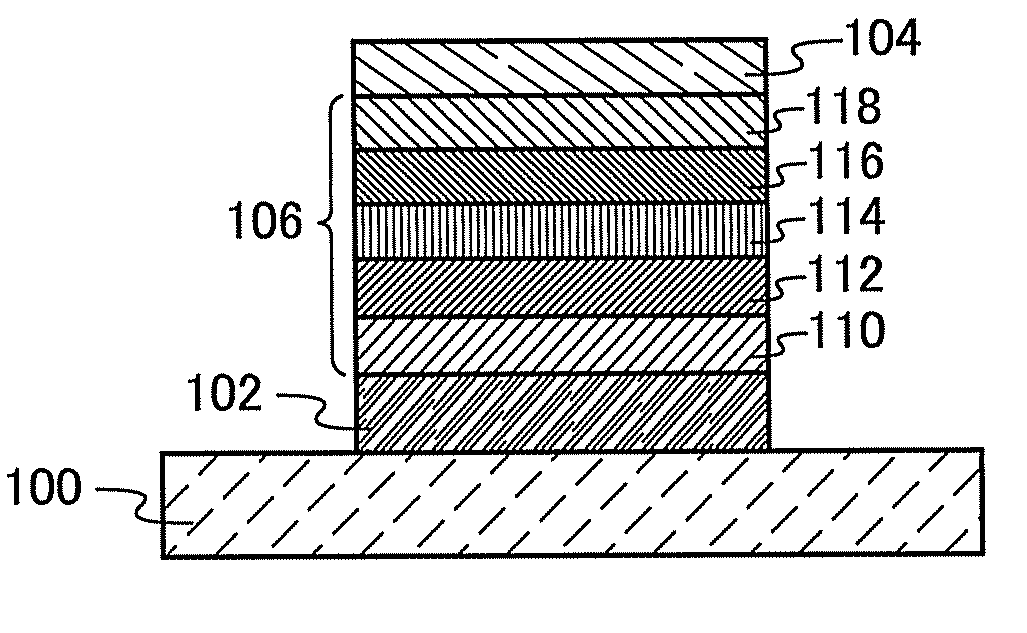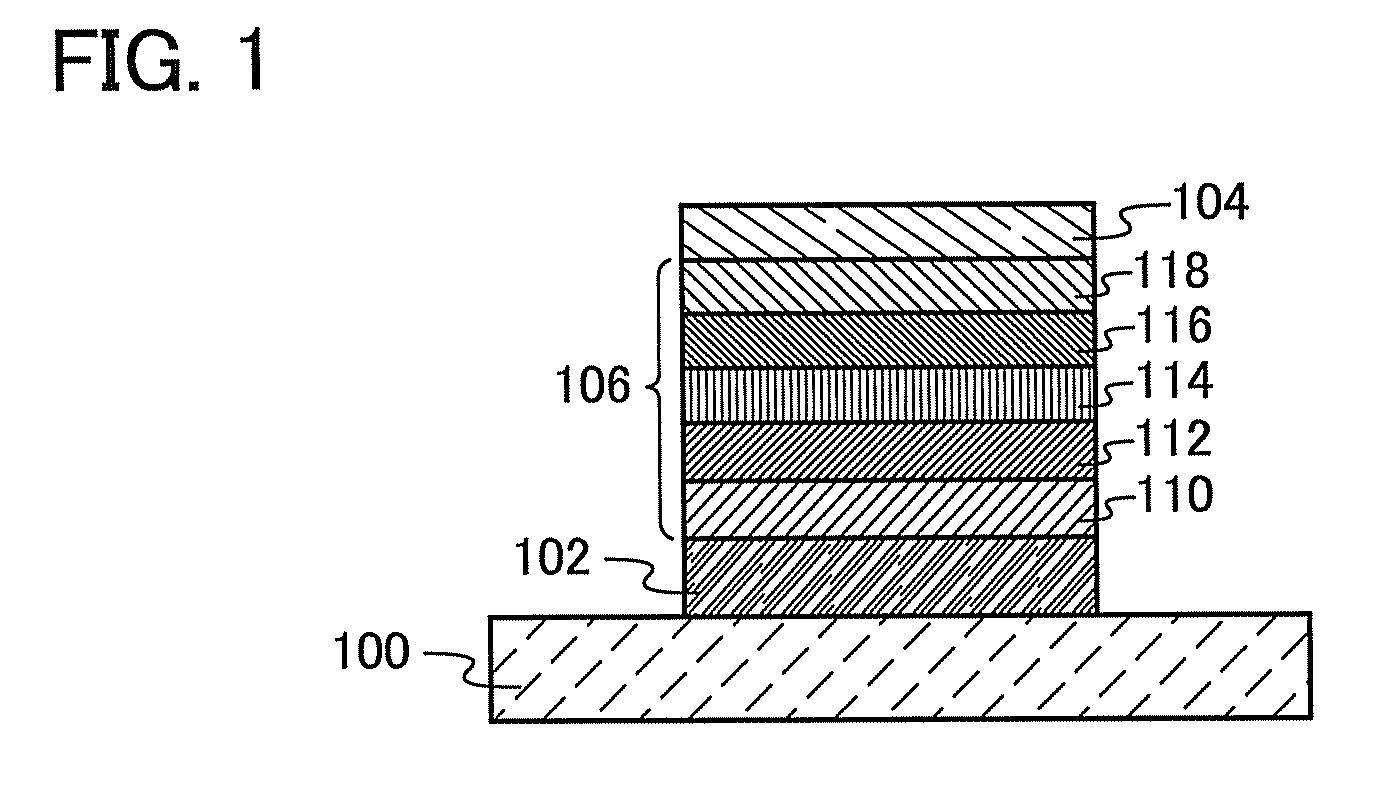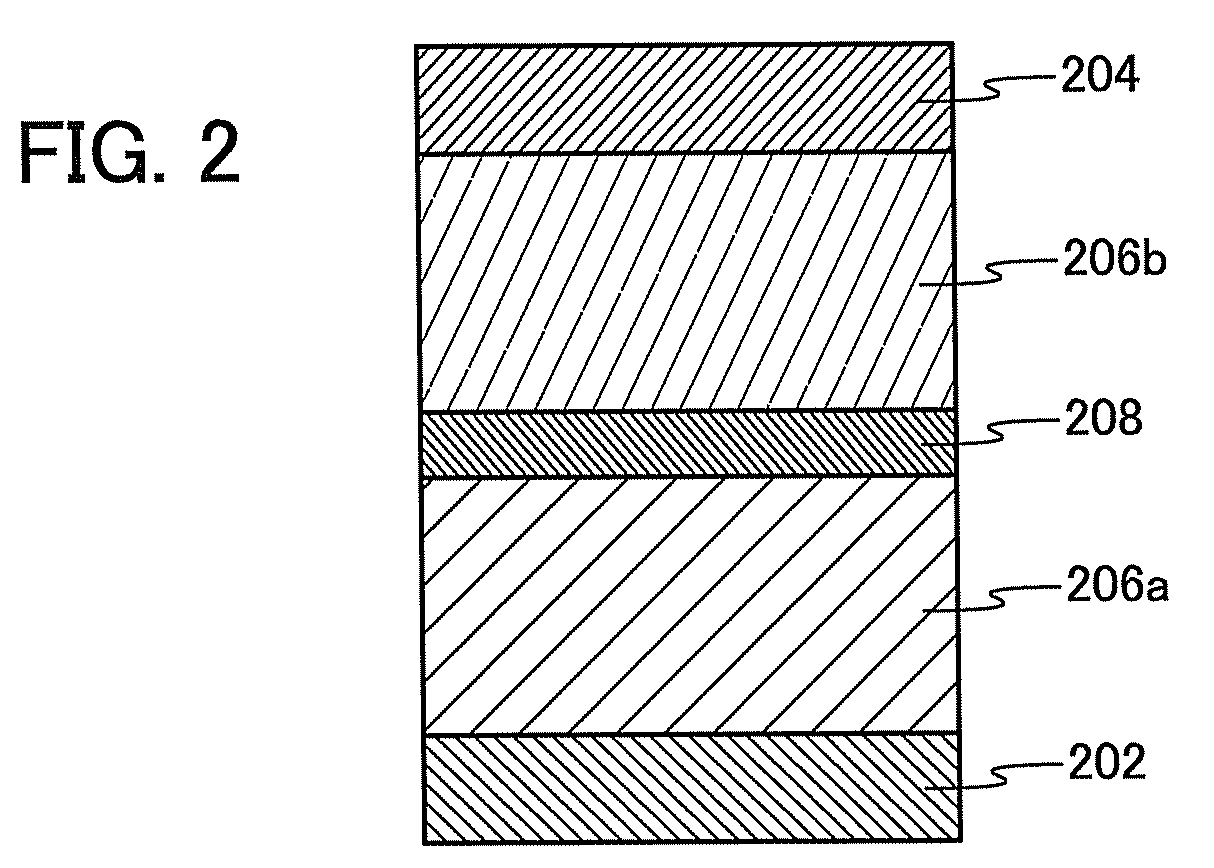Method for Manufacturing Light-Emitting Element, Light-Emitting Element, Light-Emitting Device, Lighting Device, and Electronic Appliance
a technology of light-emitting elements and manufacturing methods, applied in semiconductor/solid-state device manufacturing, semiconductor devices, electrical devices, etc., can solve the problems of reduced light extraction efficiency, material lack of light reflectivity properties, and increase manufacturing costs, and achieve excellent reflecting properties, low cost, and favorable characteristics
- Summary
- Abstract
- Description
- Claims
- Application Information
AI Technical Summary
Benefits of technology
Problems solved by technology
Method used
Image
Examples
embodiment 1
[0047]In this embodiment, a light-emitting element which is one embodiment of the disclosed invention is described with reference to FIG. 1.
[0048]The light-emitting element shown in FIG. 1 includes a first electrode 102, a second electrode 104, and an electroluminescence layer (hereinafter referred to as an EL layer 106) which is interposed between the first electrode 102 and the second electrode 104. Here, the first electrode 102 may be used as an anode while the second electrode 104 is used as a cathode, or the first electrode 102 may be used as a cathode while the second electrode 104 is used as an anode. In this embodiment, the case where the first electrode 102 functions as an anode and the second electrode 104 functions as a cathode is described as an example.
[0049]A substrate 100 functions as a supporting body of the light-emitting element. For the substrate 100, a glass substrate, a plastic substrate, a metal substrate, or the ...
embodiment 2
[0094]In Embodiment 2, an example of a light-emitting element in which a plurality of light-emitting units are stacked (hereinafter this light-emitting element is referred to as a stacked-type light-emitting element) will be described with reference to FIG. 2.
[0095]The light-emitting element shown in FIG. 2 has a first electrode 202, a second electrode 204, a first EL layer 206a and a second EL layer 206b which are interposed between the first electrode 202 and the second electrode 204, and a charge generation layer 208 which is interposed between the first EL layer 206a and the second EL layer 206b. Here, the structures of the first electrode 202 and the second electrode 204 are similar to those of the first electrode 102 and the second electrode 104 described in Embodiment 1. Further, the structures of the first EL layer 206a and the second EL layer 206b are similar to that of the EL layer 106 described in the above embodiment. Note that the fi...
embodiment 3
[0103]In this embodiment, an example of a light-emitting device that has a light-emitting element is described with reference to drawings.
[0104]First, an example of an active-matrix light-emitting device is described with reference to FIGS. 3A and 3B. FIG. 3A is a top view of the light-emitting device, and FIG. 3B is a cross-sectional view taken along lines A-A′ and B-B′ of FIG. 3A. The light-emitting device includes an element substrate 310 and a driver circuit portion (a source side driver circuit) 301, a pixel portion 302, a driver circuit portion (a gate side driver circuit) 303, and the like, over the element substrate 310. A filler is filled in a region 307 surrounded by the element substrate 310, a sealing substrate 304 and a sealing material 305. As a filler, an inert gas (such as nitrogen or argon) or a sealing material is used.
[0105]A lead wiring 308 is connected to the driver circuit portion 301 and the driver circuit portion 303. Note that the lead wiring 308 is a wiring...
PUM
| Property | Measurement | Unit |
|---|---|---|
| light reflectivity | aaaaa | aaaaa |
| light reflectivity | aaaaa | aaaaa |
| reflectance | aaaaa | aaaaa |
Abstract
Description
Claims
Application Information
 Login to View More
Login to View More - R&D
- Intellectual Property
- Life Sciences
- Materials
- Tech Scout
- Unparalleled Data Quality
- Higher Quality Content
- 60% Fewer Hallucinations
Browse by: Latest US Patents, China's latest patents, Technical Efficacy Thesaurus, Application Domain, Technology Topic, Popular Technical Reports.
© 2025 PatSnap. All rights reserved.Legal|Privacy policy|Modern Slavery Act Transparency Statement|Sitemap|About US| Contact US: help@patsnap.com



